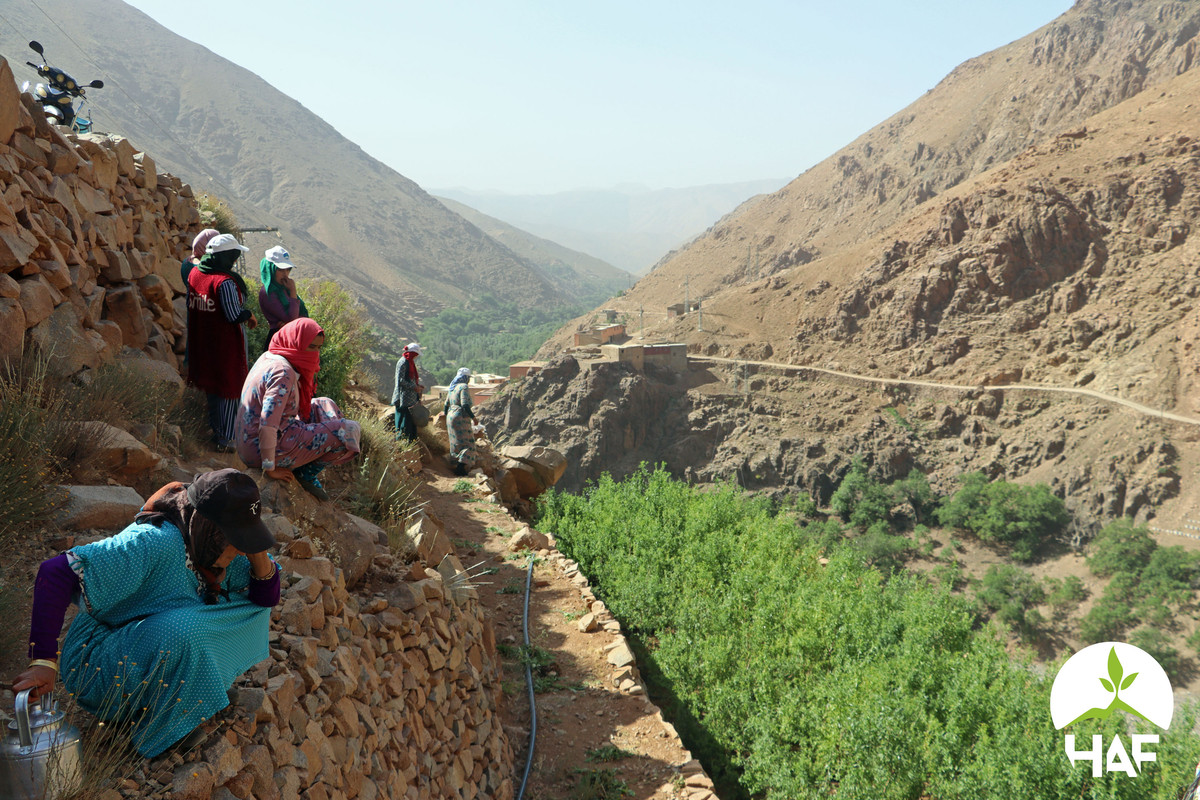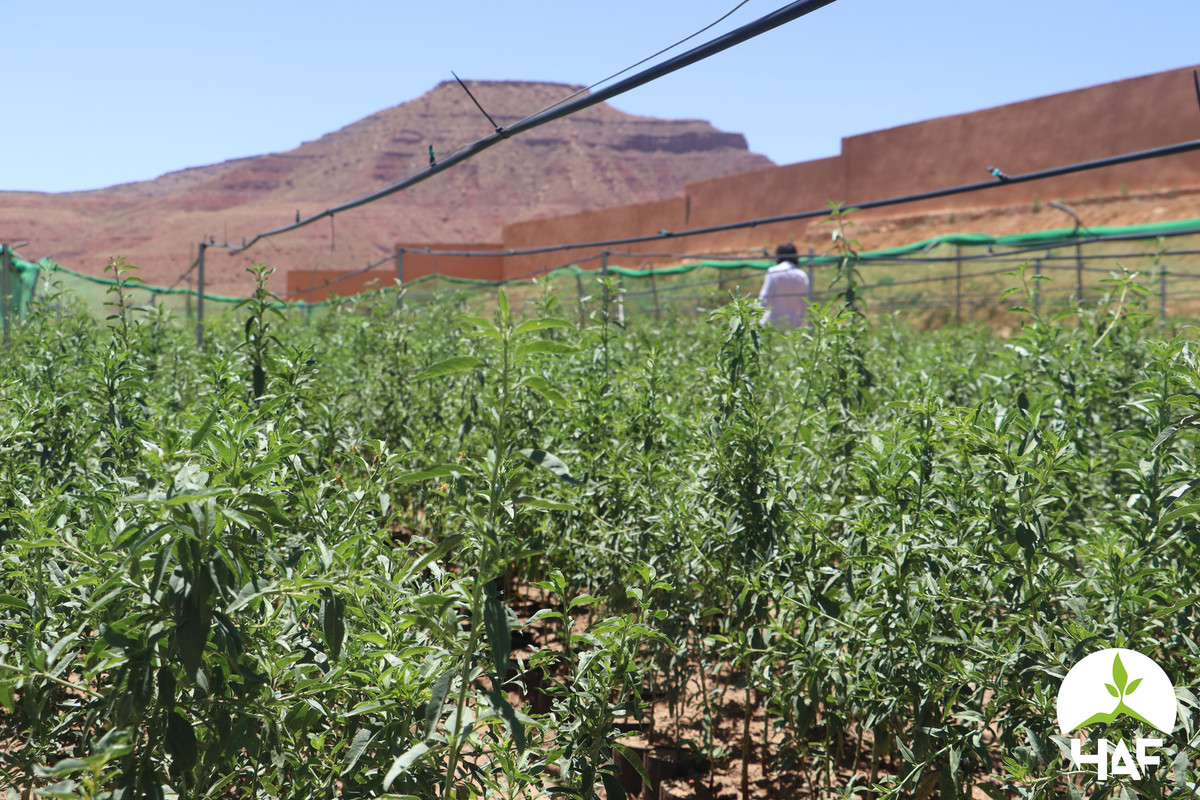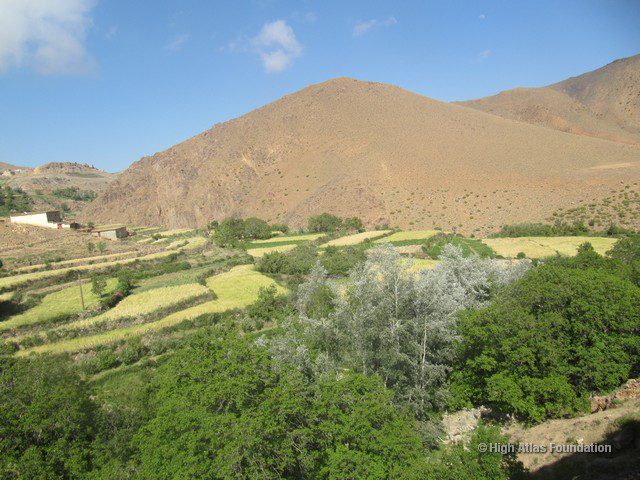In the recent webinar titled “Crops to End Hunger: Accelerating Seed Delivery through
Sustainable Seed Systems” hosted by Agrilinks, speakers described the challenges, new approaches, and potential solutions surrounding commercial seed delivery in developing nations in Africa. Some of the panelists had recently developed a whitepaper making recommendations on how to increase the number of crop varieties available to farmers and seed varietal turnover so that better seeds make their way to farmers.
By breaking down the process from research and breeding to growth and farming into a product life cycle, they made it easier to understand the difficulties at each step and where solutions can be targeted for the greatest impact. In taking this approach, the High Atlas Foundation’s (HAF) role in the process can be outlined, enabling and accelerating the growth of better crop varieties.

The webinar’s speakers used the product life cycle for seed systems to describe the obstacles and challenges facing seed delivery. Nora Lapitan, from the USAID Bureau for Resilience and Food Security summarized the project life cycle as being split into three phases: Breeding, Decision Point (where a decision is made on what variety is produced, promoted, registered, and commercialized), and the Production, Marketing, and Distribution phase. She mentioned that this life cycle can be a tool for collaboration as partnerships are vital for success, especially in the breeding stages.
Tony Gathungu, Global Head of Seeds2B for The Syngenta Foundation for Sustainable Agriculture (SFSA), used this project life cycle approach to describe challenges. He mentioned that the link between breeding and production of seeds was not happening naturally in the public sector. Reasons for this include a larger number of seed varieties, and inadequate data about these varieties for farmers to make decisions. In addition, government licensing approaches are complicated and unclear. At each step along the way, from variety design to seed sales of new varieties, numerous factors make it difficult for the latest seeds to be grown.

So where does HAF fit into this process? Barbara Wells, Director General of the International Potato Center, mentioned that in regards to seed delivery, it is imperative to “partner with local stakeholders to see impact at scale”. HAF’s participatory development approach places it in a unique position with close contact and partnerships with farmers. Using the product life cycle approach isolates stages where HAF’s help is most effective.
For example, Gathungu noted that a common challenge in the “growth” subphase is farmers lacking awareness of and distrusting new varieties of seeds. In addition, Jane Ininda, Head of Seed Research and Systems Development at Alliance for a Green Revolution in Africa (AGRA), mentioned making farmers aware of new varieties with superior traits is a key priority for the sector.
Capacity-building workshops target these issues, helping farmers select the best varieties for their area and running farmer-awareness campaigns. This also provides a solution to the problems of a large number of varieties with lacking data, which takes place in the vital “Decision Point” phase of the project life cycle. HAF assistance of community nurseries through its implementation of the USAID Farmer-to-Farmer Program is an opportunity for local farmers to test new varieties of seeds and monitor their growth, and to collect information to determine their effectiveness and value. In this way and others, HAF helps Moroccan farmers decide which seeds are best suited for them, assuring them of their effectiveness and accelerating the uptake of new varieties.
Hence, analyzing seed delivery and development as a product life cycle isolates obstacles and targets solutions, accelerating new seed variety adoption by farmers. HAF and its community, civil, and governmental partners can help solve problems along certain phases of the life cycle through its close relationship with farmers. As these seed varieties reach farmers, better crops will be cultivated and the cycle will continue, with ever-improving seed varieties emerging and being grown. This will help in the difficult fight against poverty and hunger, improving the lives of millions.







